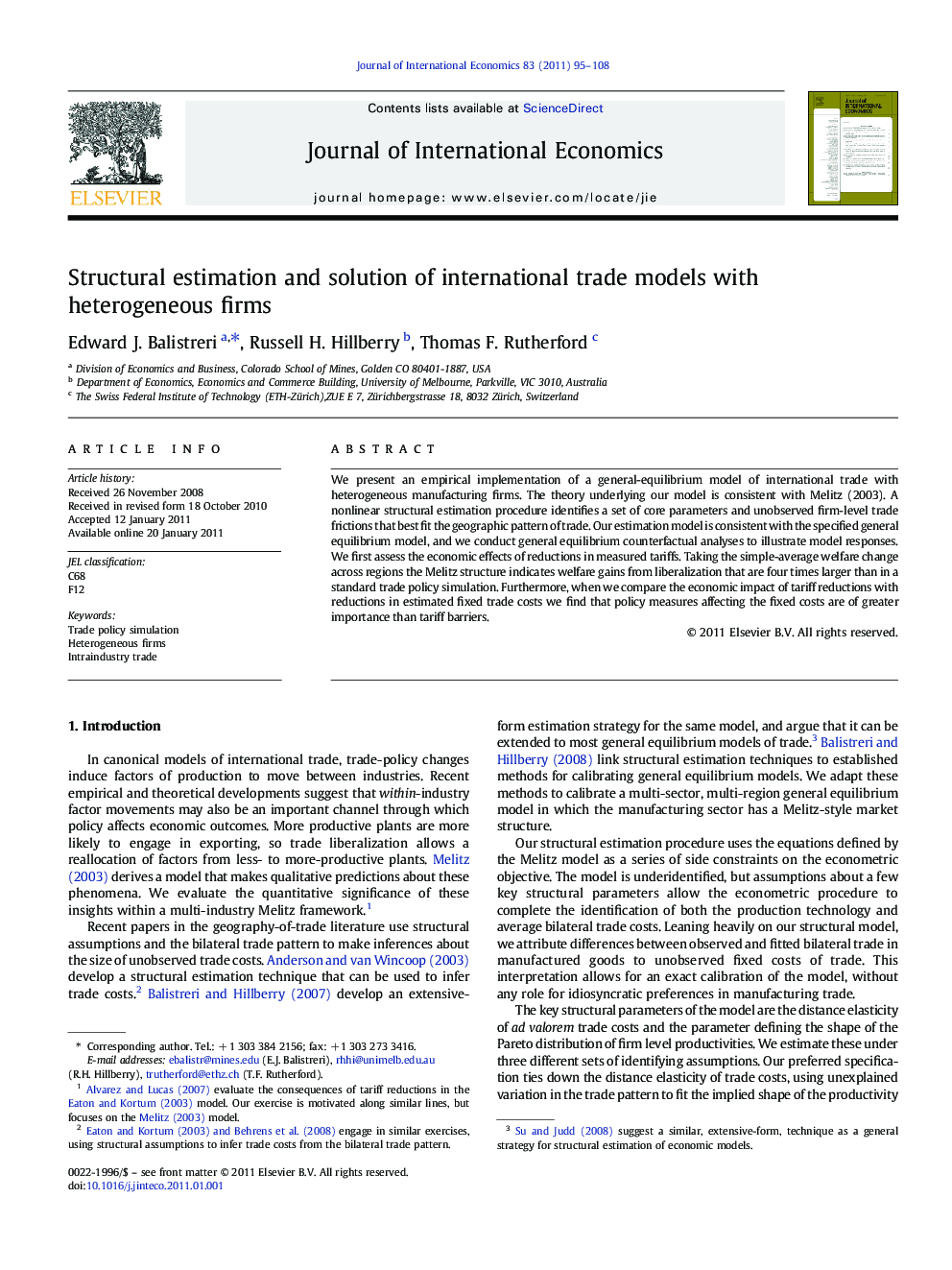| Article ID | Journal | Published Year | Pages | File Type |
|---|---|---|---|---|
| 962637 | Journal of International Economics | 2011 | 14 Pages |
Abstract
We present an empirical implementation of a general-equilibrium model of international trade with heterogeneous manufacturing firms. The theory underlying our model is consistent with Melitz (2003). A nonlinear structural estimation procedure identifies a set of core parameters and unobserved firm-level trade frictions that best fit the geographic pattern of trade. Our estimation model is consistent with the specified general equilibrium model, and we conduct general equilibrium counterfactual analyses to illustrate model responses. We first assess the economic effects of reductions in measured tariffs. Taking the simple-average welfare change across regions the Melitz structure indicates welfare gains from liberalization that are four times larger than in a standard trade policy simulation. Furthermore, when we compare the economic impact of tariff reductions with reductions in estimated fixed trade costs we find that policy measures affecting the fixed costs are of greater importance than tariff barriers.
Related Topics
Social Sciences and Humanities
Economics, Econometrics and Finance
Economics and Econometrics
Authors
Edward J. Balistreri, Russell H. Hillberry, Thomas F. Rutherford,
